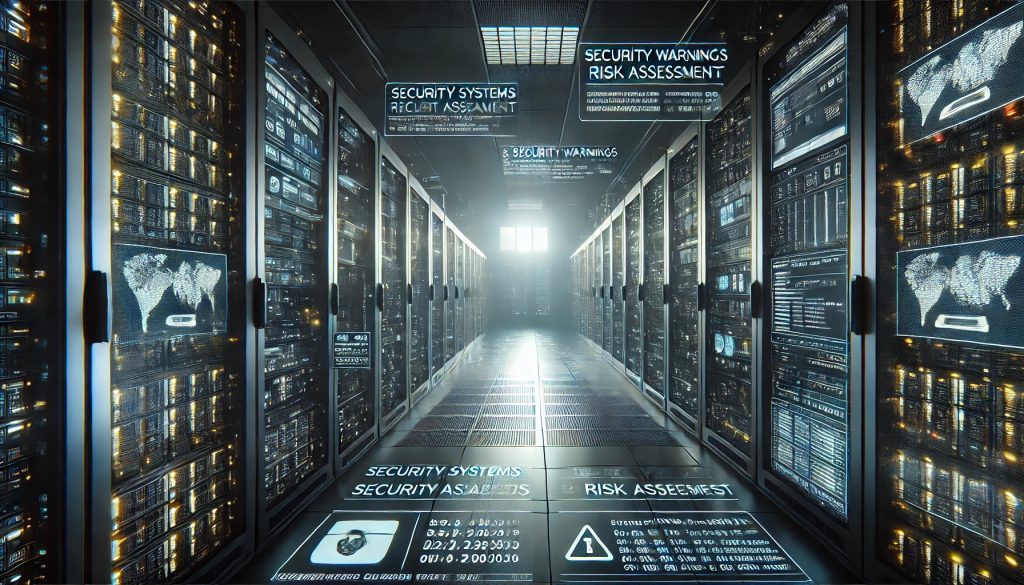
In today’s digitally interconnected world, cybersecurity is more crucial than ever. With increasing threats targeting businesses, individuals, and even national infrastructure, understanding how to enhance cybersecurity is paramount. This guide aims to provide a detailed roadmap for strengthening your cybersecurity posture, ensuring your sensitive data and systems remain secure. Drawing insights from leading cybersecurity experts and recent industry updates, this guide is designed to help you navigate the complexities of modern cyber threats.
Cybersecurity challenges have evolved dramatically over the past decade. According to the Government Accountability Office, federal cybersecurity remains a high-risk area due to persistent threats and vulnerabilities. Additionally, Microsoft highlights the importance of robust cybersecurity measures to protect against sophisticated attacks. Businesses, regardless of size, must prioritize cybersecurity to safeguard their digital assets. This guide will walk you through essential steps and strategies, including risk assessment, implementing security protocols, employee training, and adopting advanced technologies.
By following these steps, you can significantly reduce the risk of cyberattacks and enhance the resilience of your organization’s cybersecurity infrastructure. Whether you are a cybersecurity professional or a business owner looking to improve your knowledge, this guide provides practical advice and actionable insights tailored for June 2024.
Conduct a Comprehensive Risk Assessment

The first step in enhancing cybersecurity is to conduct a comprehensive risk assessment. This involves identifying and evaluating the potential threats and vulnerabilities within your organization’s IT infrastructure. A thorough risk assessment will help you understand where your security gaps lie and prioritize areas that require immediate attention.
Key steps in conducting a risk assessment include:
- Asset Inventory: List all hardware, software, and data assets within your organization.
- Threat Analysis: Identify potential threats such as malware, phishing attacks, and insider threats.
- Vulnerability Assessment: Evaluate weaknesses in your security systems that could be exploited by threats.
- Risk Evaluation: Determine the likelihood and potential impact of different threats.
By understanding your risk landscape, you can develop targeted strategies to mitigate these risks effectively.
Implement Strong Security Protocols

Once you have identified the risks, the next step is to implement strong security protocols to protect your assets. This includes:
- Access Controls: Ensure that only authorized personnel have access to sensitive information. Implement multi-factor authentication (MFA) and role-based access controls.
- Encryption: Encrypt sensitive data both in transit and at rest to prevent unauthorized access.
- Firewalls and Intrusion Detection Systems (IDS): Deploy firewalls and IDS to monitor and control incoming and outgoing network traffic based on predetermined security rules.
- Patch Management: Regularly update software and systems to patch known vulnerabilities.
Additionally, it’s crucial to establish and enforce security policies that outline the acceptable use of IT resources and the responsibilities of employees in maintaining cybersecurity.
Employee Training and Awareness
Human error is a significant factor in many cybersecurity incidents. Training employees to recognize and respond to cyber threats is essential. Key components of an effective training program include:
- Phishing Awareness: Teach employees how to identify phishing emails and report suspicious activities.
- Password Management: Educate staff on the importance of strong, unique passwords and the use of password managers.
- Incident Response: Train employees on the steps to take in the event of a security breach, including how to report incidents promptly.
Regularly updating and reinforcing training programs ensures that employees remain vigilant and informed about the latest cybersecurity threats.
Adopt Advanced Technologies
Incorporating advanced technologies can significantly enhance your cybersecurity posture. Consider the following technologies:
- Artificial Intelligence (AI) and Machine Learning (ML): Use AI and ML to detect and respond to threats in real-time. These technologies can analyze vast amounts of data and identify patterns that may indicate a security breach.
- Security Information and Event Management (SIEM): Implement SIEM solutions to collect and analyze security data from various sources, providing a comprehensive view of your security environment.
- Zero Trust Architecture: Adopt a Zero Trust model, which assumes that threats could be both inside and outside the network, and continuously verifies the legitimacy of access requests.
By leveraging these advanced technologies, you can enhance threat detection, streamline incident response, and improve overall security management.
Key Strategies to Enhance Cybersecurity
| Strategy | Description |
|---|---|
| Risk Assessment | Identify and evaluate potential threats and vulnerabilities. |
| Security Protocols | Implement access controls, encryption, firewalls, and patch management. |
| Employee Training | Educate employees on cybersecurity best practices and threat awareness. |
| Advanced Technologies | Utilize AI, ML, SIEM, and Zero Trust Architecture for enhanced security. |
Conclusion
Enhancing cybersecurity is a continuous process that requires vigilance, adaptability, and a proactive approach. By conducting comprehensive risk assessments, implementing robust security protocols, training employees, and adopting advanced technologies, you can build a resilient cybersecurity infrastructure that protects your organization from evolving threats.
As highlighted in recent updates from industry leaders like Microsoft and security-focused organizations such as Five Eyes, staying ahead of cyber threats is crucial. The dynamic nature of cybersecurity means that what works today may not be sufficient tomorrow. Therefore, it is essential to stay informed about the latest trends and best practices in cybersecurity.
Investing in cybersecurity not only protects your organization’s data and systems but also builds trust with your clients and stakeholders. In an era where data breaches and cyberattacks are becoming increasingly common, demonstrating a strong commitment to cybersecurity can set your business apart and provide a competitive edge.
Remember, cybersecurity is not solely the responsibility of the IT department. It requires a collective effort from all members of the organization, from top management to individual employees. By fostering a culture of security awareness and continuous improvement, you can significantly reduce the risk of cyber incidents and ensure the long-term success and security of your organization.
Stay vigilant, stay informed, and take proactive steps to enhance your cybersecurity today.
FAQ
What is the first step in enhancing cybersecurity?
Conducting a comprehensive risk assessment to identify and evaluate potential threats and vulnerabilities.
Why is employee training important in cybersecurity?
Human error is a significant factor in many cyber incidents. Training employees helps them recognize and respond to threats effectively.
What are some advanced technologies that can enhance cybersecurity?
Artificial Intelligence (AI), Machine Learning (ML), Security Information and Event Management (SIEM), and Zero Trust Architecture.
References
- Government Accountability Office. (n.d.). What are the biggest challenges in federal cybersecurity? High-risk update. GAO. Retrieved June 19, 2024, from https://www.gao.gov/blog/what-are-biggest-challenges-federal-cybersecurity-high-risk-update
- Microsoft. (2024, June 13). Microsoft’s work to strengthen cybersecurity protection. Microsoft On the Issues. Retrieved June 19, 2024, from https://blogs.microsoft.com/on-the-issues/2024/06/13/microsofts-work-to-strengthen-cybersecurity-protection/
- Hootsuite. (n.d.). Social media security for business. Hootsuite. Retrieved June 19, 2024, from https://blog.hootsuite.com/social-media-security-for-business/
- Industrial Cyber. (n.d.). Five Eyes: Critical 5 nations focus on adapting to evolving cyber threats to boost critical infrastructure security resilience. Industrial Cyber. Retrieved June 19, 2024, from https://industrialcyber.co/critical-infrastructure/five-eyes-critical-5-nations-focus-on-adapting-to-evolving-cyber-threats-to-boost-critical-infrastructure-security-resilience/
